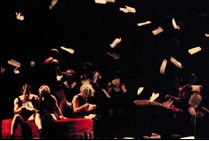
New York Immigration Coalition
February 1, 2006
Battery Park, NYC
Invocation
Blessed Holy One, we know you by many names and we call you by many names in many languages, but at this hour of moral concern we call out to you with one voice.
Protect us as we protect America’s values. Shield us as we shield our nation from a culture of fear and suspicion. Guard us as we guard the rights of women, men and children to live in a land of religious freedom. Strengthen us as we fight for the rights of families to live and work without harassment. Guide us as we aim to reunite families across borders.
Eternal One, remind us to listen humbly to each story of immigration. The stories of the first people who crossed the Bering Strait into this land. The stories of forced immigration. The stories of fleeing from persecution. And the most common of all, the stories of those who have come to these shores to avoid the crushing indignity of extreme poverty. Teach us to listen compassionately to all the stories that surround us without judgment.
To you, to the One our ancestors cried out to, we cry again today. We cry for a world that has been drained of trust due to the actions of a few self-destructive men. We cry for a world in which limited understanding of language and culture has lead to unnecessary social divisions. And most of all we cry for those in this land who are silent, not visible, those who fear even to lift up their voice. May the prayers in their hearts be heard at this hour.
Source of life, we place ourselves before you. May we be vessels for righteous teachings, and may our voices be heard throughout the land. May you lead us to the day when we can join together to celebrate a careful and compassionate immigration policy in our nation.
- Rabbi Daniel S. Brenner
An article on the rally appears in The New York Sun


